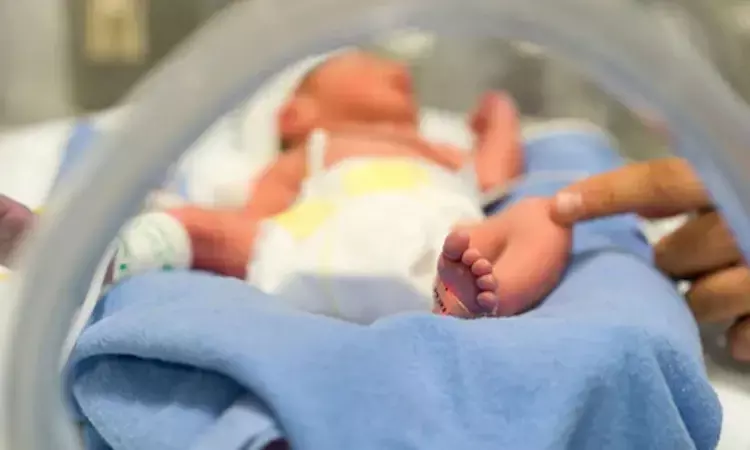- Home
- Medical news & Guidelines
- Anesthesiology
- Cardiology and CTVS
- Critical Care
- Dentistry
- Dermatology
- Diabetes and Endocrinology
- ENT
- Gastroenterology
- Medicine
- Nephrology
- Neurology
- Obstretics-Gynaecology
- Oncology
- Ophthalmology
- Orthopaedics
- Pediatrics-Neonatology
- Psychiatry
- Pulmonology
- Radiology
- Surgery
- Urology
- Laboratory Medicine
- Diet
- Nursing
- Paramedical
- Physiotherapy
- Health news
- Fact Check
- Bone Health Fact Check
- Brain Health Fact Check
- Cancer Related Fact Check
- Child Care Fact Check
- Dental and oral health fact check
- Diabetes and metabolic health fact check
- Diet and Nutrition Fact Check
- Eye and ENT Care Fact Check
- Fitness fact check
- Gut health fact check
- Heart health fact check
- Kidney health fact check
- Medical education fact check
- Men's health fact check
- Respiratory fact check
- Skin and hair care fact check
- Vaccine and Immunization fact check
- Women's health fact check
- AYUSH
- State News
- Andaman and Nicobar Islands
- Andhra Pradesh
- Arunachal Pradesh
- Assam
- Bihar
- Chandigarh
- Chattisgarh
- Dadra and Nagar Haveli
- Daman and Diu
- Delhi
- Goa
- Gujarat
- Haryana
- Himachal Pradesh
- Jammu & Kashmir
- Jharkhand
- Karnataka
- Kerala
- Ladakh
- Lakshadweep
- Madhya Pradesh
- Maharashtra
- Manipur
- Meghalaya
- Mizoram
- Nagaland
- Odisha
- Puducherry
- Punjab
- Rajasthan
- Sikkim
- Tamil Nadu
- Telangana
- Tripura
- Uttar Pradesh
- Uttrakhand
- West Bengal
- Medical Education
- Industry
How to avoid epinephrine dosing errors in infants? JAMA study provides insight

USA: A simple emergency medical services (EMS) intervention employing a 1-mL syringe for tiny epinephrine doses was linked to a higher rate of proper epinephrine dose administration without lowering delivery speed, says an article published in the Journal of American Medical Association.
Because of the potential for decimal translation errors (leading to 10-fold errors) and the inaccuracy in providing lower doses using frequently provided (1 mg/10 mL) prefilled epinephrine syringes, the smallest children are at the highest risk of epinephrine dosing errors. As a result, Matt Hansen and colleagues undertook this study to see if a simulation-driven emergency medical services protocol change that uses a 1-mL syringe to provide tiny epinephrine doses lowers dosage errors in newborns.
Researchers ran simulations in two separate time periods for this quality improvement study, and data were collected in real-time during the simulation situations. The SQUIRE reporting requirements were followed for this study. All simulations were carried out in real-time, with the same infant simulator and EMS agencies in a large regional EMS system where complex life support–capable public fire and private transfer units react to all calls for service. To compare the 2016 and 2020 data, a 2-tailed Fisher exact test was used; this test was chosen due to the very small sample sizes. Stata version 15 was used for all statistical analyses.
The key findings of this study were as follows:
1. This study enlisted the help of 432 EMS workers.
2. In 2016, a total of 47 neonatal cardiac arrest simulations were performed, involving approximately 15% of the area's EMS staff.
3. Two simulations were eliminated due to audio/video issues and a lack of participant permission.
4. 39 newborn cardiac arrest simulations were performed in 2020.
5. From 2016 to 2020, the proportion of patients receiving epinephrine climbed considerably.
6. From 2016 to 2020, the percentage of those who received epinephrine who received an acceptable dose grew considerably.
7. The time to give epinephrine dropped from a mean (SD) of 395 (30) seconds in the 2016 simulations to 322 (18) seconds in the 2020 simulations while using the 1-mL syringe.
In conclusion, this study's shortcomings include its empirical approach and use of a single urban EMS system. These data imply that a comparable technique could help reduce epinephrine dose errors in newborns.
Reference:
Hansen M, Walker-Stevenson G, Eriksson C, et al. Analysis of an Intervention for Emergency Medical Services Personnel to Reduce Epinephrine Dosing Errors in Infants. JAMA Netw Open. 2022;5(4):e227645. doi:10.1001/jamanetworkopen.2022.7645
Medical Dialogues consists of a team of passionate medical/scientific writers, led by doctors and healthcare researchers. Our team efforts to bring you updated and timely news about the important happenings of the medical and healthcare sector. Our editorial team can be reached at editorial@medicaldialogues.in.
Dr Kamal Kant Kohli-MBBS, DTCD- a chest specialist with more than 30 years of practice and a flair for writing clinical articles, Dr Kamal Kant Kohli joined Medical Dialogues as a Chief Editor of Medical News. Besides writing articles, as an editor, he proofreads and verifies all the medical content published on Medical Dialogues including those coming from journals, studies,medical conferences,guidelines etc. Email: drkohli@medicaldialogues.in. Contact no. 011-43720751


